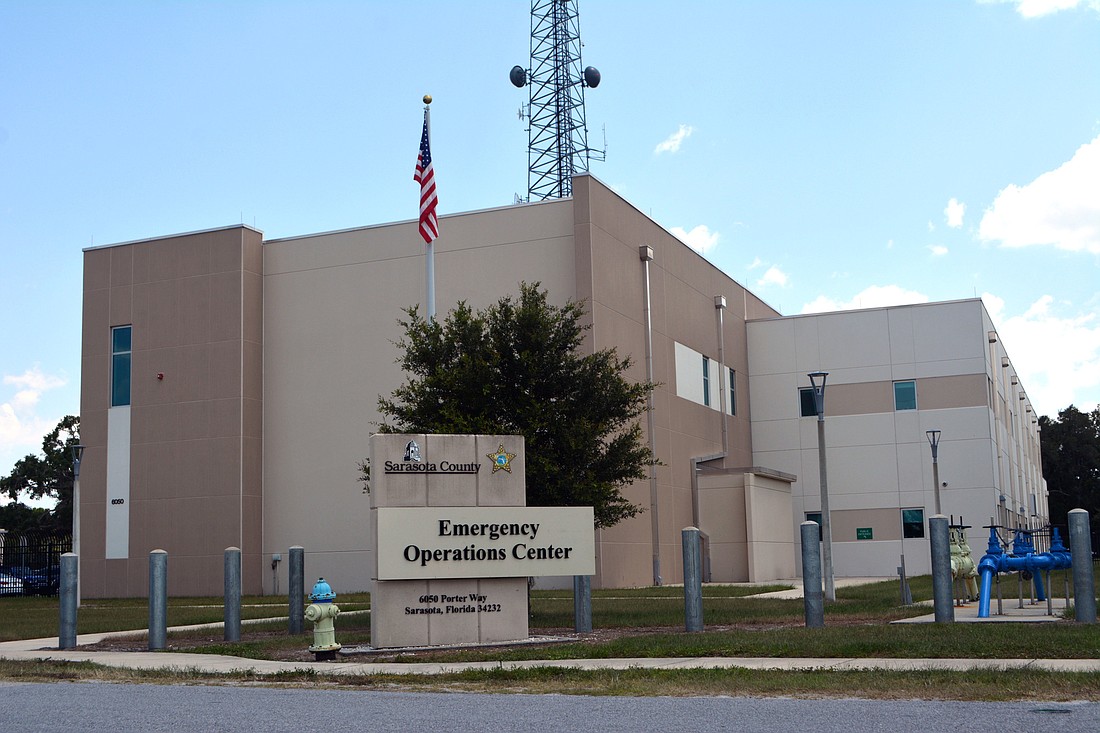- December 15, 2025
-
-
Loading

Loading

Hurricane Irma’s back-and-forth forecast and triple-digit winds changed the way Sarasota County emergency managers looked at approaching storms and also changed residents’ ideas about evacuations and where to go.
One of the strongest and costliest hurricanes to hit the United States, Irma in early September 2017 was, at one point, forecast to put Sarasota County in its direct path. Even with its ultimate jog toward the center of the state, Irma prompted evacuations along the beaches as Sarasota County fell under a hurricane warning.
About 20,000 evacuees (and 3,000 pets) streamed to the county’s 11 major-storm shelters — four in the North Port area and seven in and around Sarasota. In particular, residents of the south end of the county found themselves traveling farther than expected to reach a safe shelter and, even then, every shelter experienced space shortages.
Since then, the county has decided to re-evaluate its shelter inventory, eliminating from consideration all but those 11 major-storm ready facilities until others are upgraded. But, how does the county determine where and how to develop a new shelter?
According to Sarasota County Emergency Operations Chief Ed McCrane, the three major factors the county takes into account when developing a new shelter are the ability to withstand hurricane-force winds, a location outside of flood zones and adequate distance from storm surge zones A, B and C.
“In the past, it was thought that you could just put hurricane shutters on any building, any school, and it would be a hurricane shelter,” McCrane said. “During last year, we had the state of Florida come down with an engineer, and the school district partners did a good job with our facilities folks … And some we found needed some work, so they came off the list for now. We’ll find the money, we’ll do the work and we’ll add them to the list for next year.”
The county uses public school buildings for its hurricane shelters, due in part to the Enhanced Hurricane Protection Area standards and Florida Building Code by which the facilities must constructed.
But a school that is “hardened” to withstand a hurricane may not necessarily be a good shelter.
Venice High School, for instance, was rebuilt in 2006 and meets the criteria as a storm-ready facility. But its location on an island, however, makes it a less than ideal shelter choice.
“There are limitations,” McCrane said. “Whenever we can build schools outside of those zones, the better.”
The county and school district are looking to possibly harden Taylor Ranch Elementary in Venice as a 12th shelter, eliminating the travel needs for residents in that vicinity.
According to Emergency Services team member Scott Montgomery, Taylor Ranch is just one option, as a potential partnership with Sarasota Memorial Hospital also presents the opportunity to develop a south-county shelter.
A new evacuation center will not be available until the start of the 2020 hurricane season at the earliest. This year, the county will offer the same 11 facilities — all of which will be opened in the event of a hurricane.
When Emergency Services staff presented the possibility of hardening Taylor Ranch to commissioners recently, they also announced the state would provide $550,000 in grants to soften the financial blow. The final price hasn’t been determined.
“Different schools have different issues to deal with. The price tag is never the same. We have been offered in the past by the state, ‘Here’s $35,000, do something with it,’” McCrane explained. “Well, that’s just not enough to do anything significant. It doesn’t make sense to do half a job.’’ The county has $3 million in surtax revenue that has been designated as funds to assist in hurricane hardening or the development of a new, freestanding evacuation center.
During Irma, many evacuees with pets went to non-pet shelters but were not turned away. This year, all 11 shelters will be designated at pet-friendly.
Additionally, McCrane stresses that residents who identify as “medically dependent” need to register ahead of time with the county to go to a medically designated center, for those will be the only two or three shelters with generators to keep equipment running.
This year, McCrane says he is not advertising the names of the three shelters that will be designated as medical shelters. Instead, registered residents will receive their evacuation assignment in the mail, and any non-registered resident who tries to show up at one of these centers will be turned away.
In any case, he urges residents to plan ahead for the season. Staying with friends and family, he says, should be a first option.
“You just have to run from the water and hide from the wind,” he said. “We’ll do the best we can with what we have, but we ask the people to do their part by developing a plan on where they’re going to go and making an evacuation center their last resort — their lifeboat, not their cruise ship.”